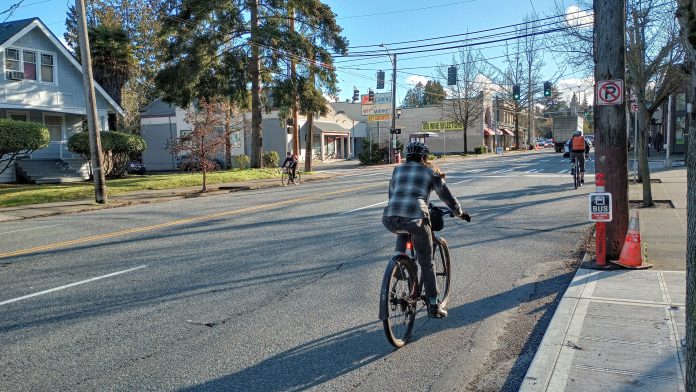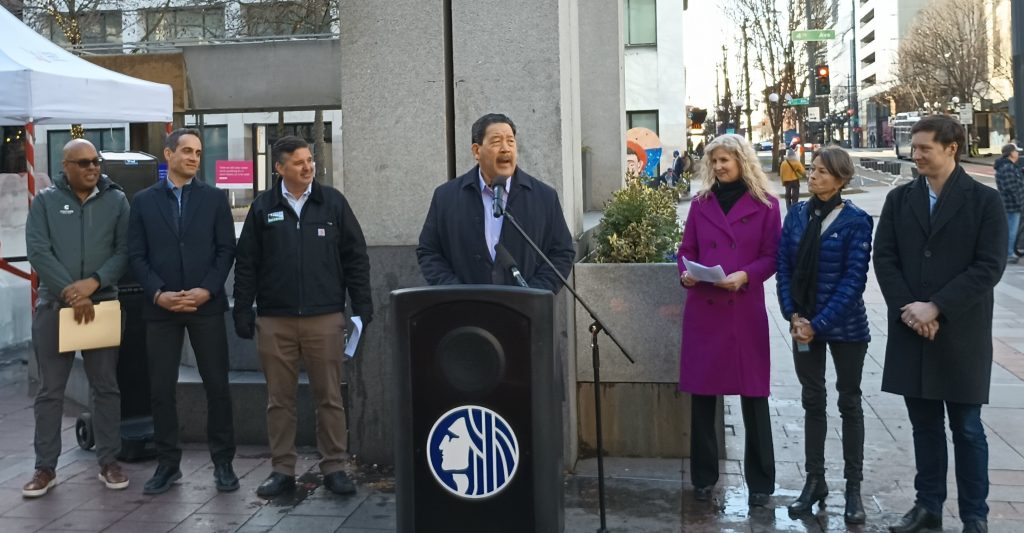
One of the first actions that Greg Spotts performed as incoming director of the Seattle Department of Transportation (SDOT) was to request a “top of bottom” review of the department’s Vision Zero strategies. That was in mid-September after 2021 had been the deadliest year on Seattle’s roadways, the highest number in 16 years. Public perception was that the overall Vision Zero program, created by SDOT in 2015 and centered around a goal of eliminating serious injuries and fatalities in traffic by 2030, was not headed in the right direction.
That review was said to have a 90-day timeline, putting its deadline near the end of 2022. A public version has yet to be released. During a live interview hosted by The Urbanist on Wednesday night, Spotts downplayed the delay and promised its release as forthcoming. To many safe streets advocates, however, the missed deadline, which had been highly touted by the director during his first few months on the job, is a big deal that signifies a lack of priority of the issue.
Spotts seemed eager to indicate that this was not the case. “It’s all going to work out just fine,” he said in response to a question about whether the review was itself becoming a microcosm of an SDOT project, a victim of the type of delays that have impacted projects like a protected bike lane on 15th Ave S in Beacon Hill.
“There were a couple things that I wanted to make a little bit better,” he said of the initial report delivered to him in early January. “I had originally thought to share it, just as is… but I thought it could be organized and presented in a way that’s a little more readable to the general audience.”
Spotts said he asked for revisions that didn’t impact the content. Then another event impacted the planned timeline for release: word of a forthcoming $25.6 million award from the U.S. Department of Transportation for the Safe Streets and Roads for All program.

“It seemed like the report could almost instantly become outdated,” Spotts said. The department saw value in pairing the recommendations in the report with the projects, now funded, that were included in the grant. With the current annual budget of $8.3 million annually for Vision Zero projects, the addition of almost $10 million per year over three years would amount to a doubling of the program, he said.
But many of the projects that USDOT is providing funding for, including new curb ramps and accessible pedestrian signals, and protected bike lanes and sidewalks, are funded outside the Vision Zero program. When looked at in the context of the city’s broader spending on safety projects, the new grant is significant, but not even as significant as leveraging every SDOT project into a safety project, a topic that any top-to-bottom review of Vision Zero within the department would surely focus on.
The real value of the report, when it comes out, should ultimately be as an encapsulation of the strategies that are working to tame Seattle’s most dangerous streets, with 80% of the pedestrian fatalities in Seattle occurring on a focused number of multi-lane, high speed arterial streets. Some so-called Vision Zero projects have shied away from making substantive changes to streets like this, even with relatively wide scope and budgets provided.
A recent years-long upgrade to the 23rd and 24th Avenues through Capitol Hill and Montlake, for example, addressed a street where most drivers were traveling through the heart of the Montlake business district at around 35 mph in 2017. At the end of the project in 2022, average speeds had hardly budged. That’s primarily because the geometry of the street remains largely unchanged. Even though the department upgraded sidewalks and bus stops, added a new pedestrian signal, and painted curb extensions on some of the trickiest intersections, the maintenance of four through lanes was a core assumption of the project. The installation of “skid-resistant surface treatments” to intersections as part of the project was seen by many as underscoring the limited impact that it was ultimately expected to have: crashes would still happen, but perhaps they’d be less severe.
Preliminary data for 2022 shows a slight decline from the big increase in deaths on Seattle’s streets in 2021, with 28 people losing their lives in traffic violence. But that headline-grabbing top line number, which transportation committee chair Alex Pedersen was touting as a decline even before the year was up, obscures the larger picture, most of which isn’t even available yet. And bigger, sustained declines will be necessary to get anywhere close to zero by 2030.
SDOT’s annual traffic report, which shows the number of overall crashes and serious injuries — is only available for 2020 at this point, illustrating yet another long delay in getting the information about what’s happening on our streets more broadly. Ideally, the delayed Vision Zero review can fill in some of those gaps.

Director Spotts said this week that right now the only thing holding back the review from being released is finding a space on Mayor Harrell’s busy schedule for a press conference to roll it out. Harrell’s spokesperson did not offer a timeline and said The Urbanist’s questions on the Vision Zero report should be directed to SDOT.
When that press conference does happen, it will likely generate headlines across the city, but we will be looking past the soundbites at the actual signs that a people-centric approach to safety is being fostered inside Seattle’s city government, even as the “Vision Zero” label has lost most of its sheen.
Watch the entirety of Director Spotts’ interview the The Urbanist here.
Ryan Packer has been writing for The Urbanist since 2015, and currently reports full-time as Contributing Editor. Their beats are transportation, land use, public space, traffic safety, and obscure community meetings. Packer has also reported for other regional outlets including Capitol Hill Seattle, BikePortland, Seattle Met, and PubliCola. They live in the Capitol Hill neighborhood of Seattle.



